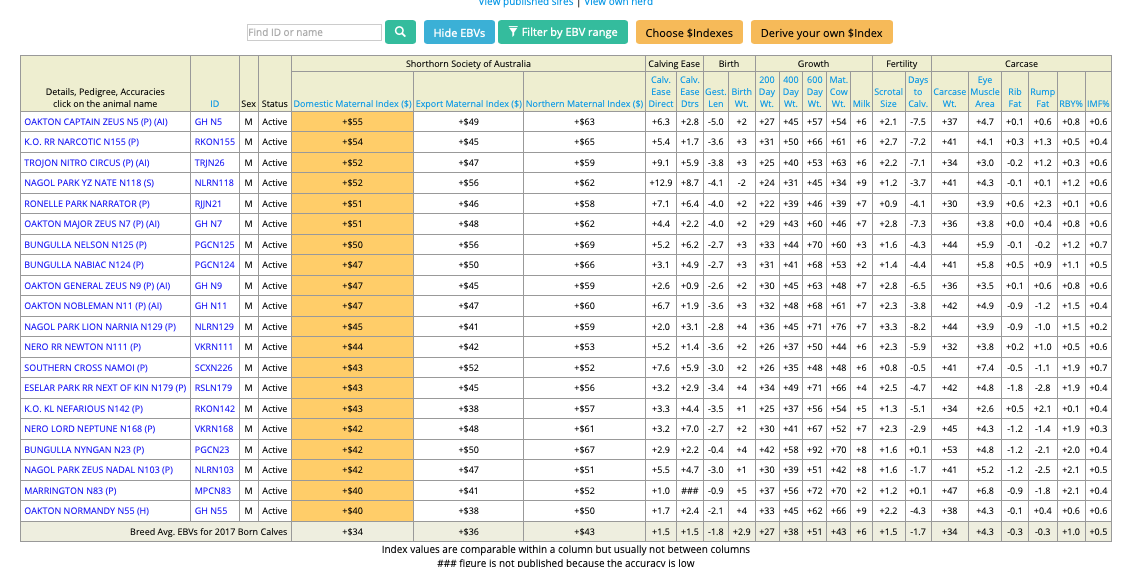If you were in the market for a new bull this year, or if you were selling bulls, then 2021 will be a year that you will probably remember for a long time! The price of bulls this year was well above he average of te last 5 years. There is a reason for that.
The combination of high cattle prices; seasonal conditions that resulted in high pasture growth; herd rebuilding across the county and overall optimism for agriculture all played a role in driving bull drives. Its worth remembering that the prices are relative to the cattle market. And even though a bull may seem dear, he is still on average worth 5 heavy steers or 7 weaner animals.
The impact of Covid-19 on bull sales was felt by buyers and sellers this year. Travel restrictions, limits on gatherings and social distancing were all factors that had to be addressed ahead of and during sales.
The result of all these influences has changed the way many people view the process of buying and selling bulls. Some of the key outcomes are worth addressing and perhaps adopting for your wn benefit in coming years.
On-line Interface is Essential
Selling cattle online is now commonplace. Producers now want to look for cattle more broadly than in their immediate location. And while attending a bull sale is aways a good day out, taking time to travel and look is becoming a factor for many producers. Often the visual assessments that producers make have been done I private visits or inspections well ahead of the sale, and bidding on line is a more efficient use of time for those producers.
For those selling bulls, online selling allows bulls to be marketed to a much broader group of potential Byers and can be a very effective way of diversifying your client base.
2. Provide presale inspection opportunities
Assessing bulls in the hours ahead of a sale can be very challenging. Looking at the bulls you have chosen as possible sires means you have to work around other producers and bulls that are peened in sale lots. Not everyone is able to see the bulls as they may like. Having a pre sale inspection - either privately formally arranged - takes some of the pre sale pressure off. You get a chance to look at bulls and perhaps see the vow herd that forms the basis of this years draft.
Make the most of pre-sale inspections
Making these opportunities available for clients is I think an essential step for bull sellers.
3. Offer independent assessment of your bulls
Increasingly producers are seeking an independent assessment of the bulls they are interested in. This is often in the form of temperament, structure and muscle. Along with BREEDPLAN data, this information can be a very powerful way to assist your clients find the right bull for their program.
While there are plenty of people offering assessments, my advice is to stick with those assessors who have a systems that have actual industry relevance and credibility. I’ve been working with ClassiMate to offer that credible and repeatable information to producers.
Its worth asking for the assessments as a buyer well ahead of the sale. As a breeder, its a good inclusion in your data offered before the sale.
4. Consider video sales
traditionally bulls have been sold in a ring in front of producers. While tradition is wha has always been done, its worth looking at the opportunities new methods provide. Video selling is rapidly being a more common method for several reasons. The first is to reduce the stress and pressure on bulls in a sale ring. often bulls react to the noise and presence of people in a way that doesn’t really reflect their temperament. Video shows them in a normal environment.
Video Sales are increasingly common
Many producers who sell using video highlight the efficiency of the sale. It keeps moving - with no delays while bulls are moved in and out of rings. It also means that there is no need to have special selling infrastructure. With good quality TV screens and seating a sale can be held pretty much anywhere which means there is a cost saving for the business.
It also makes better use of the videos and images captured as part of the cataloguing process.
5. Pen the bulls by purpose
Traditionally bulls are penned ahead of the sale in catalogue groups. I was really impressed by the Wirruna Poll Hereford approach. At Wirruna, Ian Locke pens the bulls according to their potential roles in new herds. So if you were looking for heifer bulls; bulls that have more growth; bulls to add muscle or bulls that are more general purpose you can work through specific groups. It does make it easier for clients and helps their selection decisions.
6. Its worth engaging RaynerAg for your sale!
While this is a plug for RaynerAg, increasingly I’m attending sales on behalf of breeders in order to support their clients. My role is to talk through selection decisions - either around EBVs and genetics; help evaluate structure or to offer a third opinion. For many buyers who cant attend the sale (interstate particularly) there is a person who can help look at the bulls.
Don’t forget this helps free up breeders who have plenty of things to do on the day and ensures everyone has a chance to get the help and advice they need to find the right bull.
















![Lot 7[1].jpg](https://images.squarespace-cdn.com/content/v1/5da3f3cd64169331e9219d64/1573094582042-DWJ37SGR39YOF5OH2NIX/Lot+7%5B1%5D.jpg)










